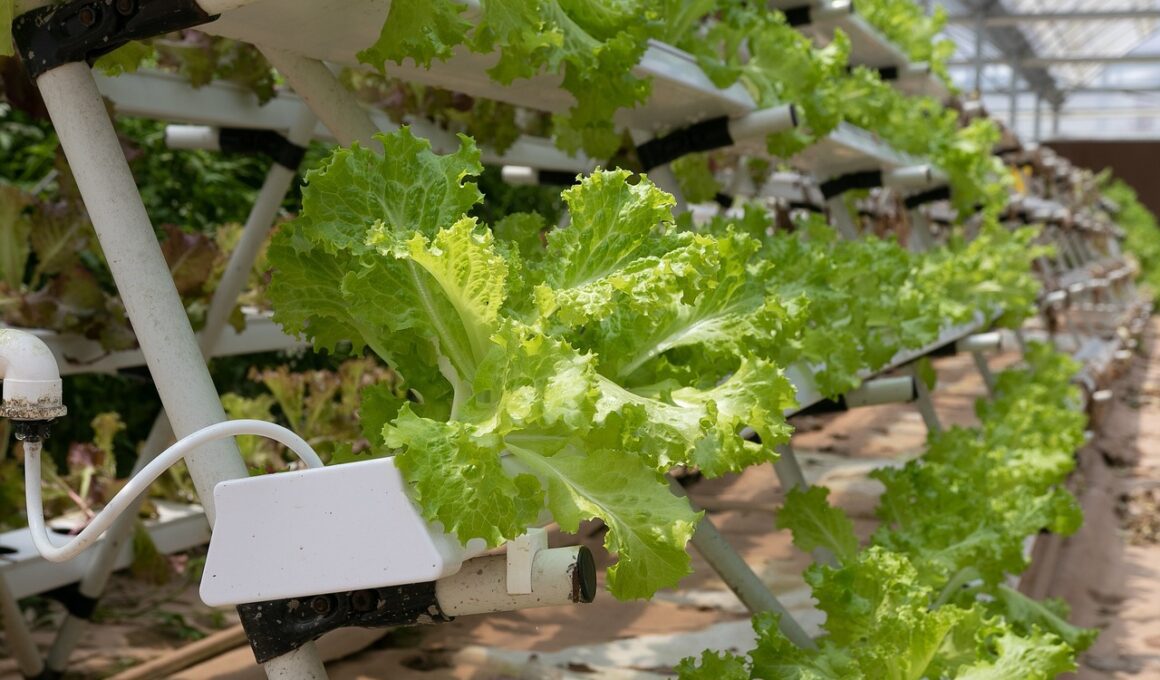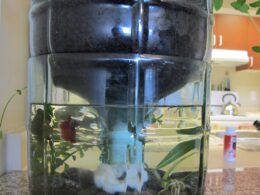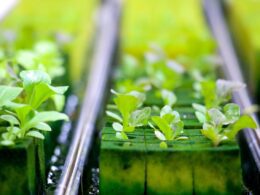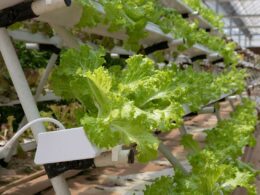Do you worry about the safety of the lettuce you eat? With recent E. coli outbreaks in traditional soil-grown lettuce, many people are turning to hydroponic lettuce as a safer alternative. But is hydroponic lettuce really free from the risk of E. coli contamination?
In this article, we will explore the science behind hydroponic growing, the safety measures taken in hydroponic lettuce production, and the role of regulations and certification in ensuring the safety of your lettuce. By the end, you will have a better understanding of whether hydroponic lettuce is a safe choice for you and your family.
Hydroponic lettuce is grown in a controlled environment, without soil, using nutrient-rich water, and artificial lighting. This method of growing lettuce is gaining popularity due to its efficiency and reduced environmental impact. However, you may wonder if this method of growing is truly safe. After all, E. coli is a dangerous bacteria that can cause severe illness and even death.
In this article, we will explore the risks of E. coli contamination in hydroponic lettuce, and the measures taken to ensure the safety of your produce. So, sit back and read on to learn more about the safety of hydroponic lettuce.
Understanding the Risks of E. coli Contamination
It’s important to be aware of the potential health hazards associated with consuming contaminated produce, particularly when it comes to E. coli transmission. This type of bacteria is found in the intestines of humans and animals, and can cause serious illness when ingested.
In some cases, E. coli contamination can lead to kidney failure and even death. The good news is that there are preventive measures in place to reduce the risk of E. coli contamination in produce.
For example, farmers can take steps to ensure that their crops are grown in a hygienic environment, and that they are harvested and processed in a way that minimizes the risk of contamination. Additionally, consumers can take steps to reduce their own risk of E. coli infection, such as washing their hands before and after handling produce, and thoroughly washing fruits and vegetables before eating them.
While hydroponic lettuce is generally considered to be safe from E. coli contamination, it’s still important to be aware of the risks and take steps to reduce the likelihood of infection. By following basic hygiene practices and being mindful of the potential risks, you can safely enjoy the many benefits of hydroponic lettuce and other produce.
The Science Behind Hydroponic Growing
You can grow plants without soil using a nutrient-rich water solution and a carefully controlled environment. This method is known as hydroponic growing and is popular for lettuce, strawberries, tomatoes, and other crops.
Hydroponic growing offers several benefits, including faster growth rates, higher yields, and reduced risk of soil-borne diseases. Nutrient solutions play a vital role in hydroponic growing, providing all necessary nutrients for plant growth. Solutions consist of water, minerals, and essential nutrients, which growers can adjust to meet specific plant needs. This precision control results in healthier, more productive crops.
Overall, hydroponic growing is a safe and effective way to grow lettuce and other crops. The controlled environment and nutrient solutions minimize the risk of E. coli contamination. Hydroponic lettuce is also a healthier option for consumers, as it is less likely to have harmful chemicals and pesticides. By using hydroponic growing methods, you can enjoy fresh, safe, and nutritious produce year-round.
Is Hydroponic Lettuce Safe to Eat Despite the Risk of E. Coli Contamination?
The safety of hydroponic lettuce is a concern due to the potential risk of E. Coli contamination. However, when grown in a controlled environment, hydroponic lettuce can be safe to consume. Strict regulations and proper hygiene practices are crucial to prevent E. Coli contamination and ensure the safety of hydroponic lettuce for consumption.
Safety Measures in Hydroponic Lettuce Production
To keep your family safe and healthy, it’s important to understand the safety measures that are implemented during the production of hydroponic lettuce. One such measure is pH control. Maintaining an appropriate pH level is crucial to the growth of healthy lettuce. Too high or too low pH levels can lead to poor nutrient uptake, which can compromise the quality and safety of the lettuce.
In hydroponic growing, pH levels are monitored and adjusted regularly to ensure that the lettuce receives the necessary nutrients to grow and thrive. Another important safety measure in hydroponic lettuce production is nutrient solution management. The nutrient solution is the primary source of all the necessary minerals and nutrients that lettuce needs to grow. Therefore, it’s crucial to ensure that the nutrient solution is free from harmful contaminants.
Regular testing and monitoring of the nutrient solution are important to ensure that it’s properly balanced and free from any harmful bacteria that can affect the safety of the lettuce. Overall, hydroponic lettuce production is a safe and efficient method of growing fresh, nutritious lettuce. With strict pH control and nutrient solution management practices, the risk of harmful contaminants such as E. coli is significantly reduced. By choosing hydroponic lettuce, you can be confident that you’re providing your family with safe and healthy produce.
Is Iceberg Lettuce Safe for Hydroponic Systems?
Iceberg lettuce is indeed safe for hydroponic systems. In fact, it offers numerous benefits when grown using this method. Iceberg lettuce hydroponics benefits include faster growth, reduced water usage, and fewer pest problems. This method eliminates the need for soil and allows for year-round cultivation. Switching to hydroponics can be a smart choice for growing healthier and more sustainable lettuce crops.
To keep your family safe and healthy, it’s important to understand the safety measures that are implemented during the production of hydroponic lettuce. One such measure is pH control. Maintaining an appropriate pH level is crucial to the growth of healthy lettuce. Too high or too low pH levels can lead to poor nutrient uptake, which can compromise the quality and safety of the lettuce.
In hydroponic growing, pH levels are monitored and adjusted regularly to ensure that the lettuce receives the necessary nutrients to grow and thrive. Another important safety measure in hydroponic lettuce production is nutrient solution management. The nutrient solution is the primary source of all the necessary minerals and nutrients that lettuce needs to grow. Therefore, it’s crucial to ensure that the nutrient solution is free from harmful contaminants.
Regular testing and monitoring of the nutrient solution are important to ensure that it’s properly balanced and free from any harmful bacteria that can affect the safety of the lettuce. Overall, hydroponic lettuce production is a safe and efficient method of growing fresh, nutritious lettuce. With strict pH control and nutrient solution management practices, the risk of harmful contaminants such as E. coli is significantly reduced. By choosing hydroponic lettuce, you can be confident that you’re providing your family with safe and healthy produce.
The Role of Regulations and Certification
If you’re interested in hydroponic farming, it’s important to understand the role of government regulations and third-party certification programs.
These regulations and certifications ensure that hydroponic growers adhere to certain standards of safety and quality in their production processes. By following these guidelines, hydroponic farmers can guarantee their customers that their produce is safe and free from harmful contaminants.
Government Regulations for Hydroponic Farming
The government has established regulations for the farming method being discussed, ensuring its safety and compliance with health standards. As hydroponic farming faces challenges such as the need for precise nutrient management and the environmental impact of hydroponics, regulations are necessary to ensure that the lettuce produced is safe for consumption.
To comply with government regulations, hydroponic farms must obtain certification from the United States Department of Agriculture (USDA) or the Food and Drug Administration (FDA). These certifications ensure that the farm meets the standards set by the government for food safety and agricultural practices.
In addition, hydroponic farms must follow specific guidelines for water quality, nutrient management, and pest control to prevent contamination and ensure the safety of the lettuce produced. Finally, regular testing and monitoring of the lettuce and the environment in which it is grown are required to ensure that it is free from harmful pathogens such as E. coli.
Through these regulations and certifications, hydroponic lettuce is held to the same high safety standards as conventionally grown lettuce.
Third-Party Certification Programs
Third-party certification programs play an essential role in guaranteeing that consumers can trust the safety and quality of hydroponic lettuce. These programs have become more critical as consumers become increasingly aware of the potential risks associated with the consumption of fresh produce.
Third-party certification programs ensure that hydroponic lettuce growers follow strict guidelines to prevent contamination by e coli and other harmful bacteria. These programs provide an independent, third-party verification that hydroponic lettuce growers are following the best practices to reduce the risk of contamination.
Consumers can trust that when they purchase hydroponic lettuce with a third-party certification, they are getting safe and high-quality produce. As a result, these certification programs are essential for the continued growth of the hydroponic industry, as they help build consumer confidence in this innovative and sustainable farming method.
Conclusion: Is Hydroponic Lettuce Safe from E. coli?
You can trust the lettuce you grow in a controlled environment. Hydroponic lettuce is grown in a closed system, which means that the water and nutrients are carefully monitored and controlled. This eliminates the possibility of harmful bacteria, like E. coli, contaminating the crop.
Additionally, hydroponic farms are often located in urban areas, which reduces the risk of exposure to animal waste and other potential dangers. Here are four reasons why hydroponic lettuce is safe from E. coli:
- Hydroponic farms use sterile growing media, such as rockwool or coconut coir, which eliminates the risk of soil-borne pathogens.
- The closed system means that there is no contact with contaminated soil, water, or animals.
- Hydroponic lettuce is grown indoors, which reduces exposure to insects and other pests that may carry bacteria.
- Hydroponic farmers often use beneficial bacteria, like Bacillus subtilis, to promote plant growth and prevent harmful bacteria from taking hold.
Overall, hydroponic lettuce is a safe and reliable option for consumers who are concerned about food safety. While there is always a risk of contamination in any agricultural system, the controlled environment of hydroponic farming provides an added layer of protection. So next time you’re at the grocery store, don’t hesitate to reach for that crisp, green head of hydroponic lettuce.
Frequently Asked Questions
What other types of produce are commonly grown using hydroponic methods?
If you’re interested in exploring alternative methods of farming, you might be curious about hydroponics. Hydroponic farming involves growing plants in nutrient-rich water instead of soil, which offers several benefits.
For one, it can be done indoors, which means you can grow produce all year round, regardless of the weather. It’s also more water-efficient than traditional farming, as the water is recycled and reused.
However, there are also some challenges to hydroponic farming, such as the need for specialized equipment and the potential for diseases to spread quickly in a closed environment. Despite these challenges, hydroponics is gaining popularity for growing a wide variety of produce, such as tomatoes, cucumbers, and herbs.
How does E. coli contamination occur in traditional soil-based farming?
To understand how E. coli contamination occurs in traditional soil-based farming, it’s important to first recognize the role of soil in the growth of crops. Soil can contain harmful bacteria, such as E. coli, which can contaminate crops through contact with animal waste or contaminated water.
Additionally, poor hygiene practices during harvesting and processing can also contribute to contamination. To prevent E. coli contamination, farmers must take steps to ensure that their soil is free of harmful bacteria, and implement proper hygiene practices throughout the farming and harvesting process.
This includes regularly testing soil for contaminants, properly disposing of animal waste, and implementing strict sanitation protocols during harvesting and processing. By taking these measures, farmers can significantly reduce the risk of E. coli contamination in their crops, and ensure that their produce is safe for consumption.
Are there any potential long-term health effects associated with consuming hydroponically grown lettuce?
When it comes to consuming hydroponically grown lettuce, you may wonder about its long term safety and nutrient content. Rest assured, studies have shown that hydroponically grown lettuce is just as safe and nutritious as traditionally grown lettuce.
In fact, hydroponic systems can even be more controlled and monitored, leading to less risk of contamination from harmful bacteria like E. coli. So you can enjoy your hydroponic lettuce without worrying about any potential long term health effects.
What steps can individuals take at home to reduce the risk of E. coli contamination in their lettuce?
To reduce the risk of E. coli contamination in your lettuce, there are a few simple steps you can take.
First, make sure you wash your hands properly before handling your lettuce. Use warm water and soap, and scrub your hands for at least 20 seconds.
Next, store your lettuce in the refrigerator at a temperature of 40°F or lower. This will slow the growth of any bacteria that may be present.
Finally, when preparing your lettuce, make sure to wash it thoroughly under running water.
These simple steps can help ensure that your lettuce is safe to eat and free from harmful bacteria.
How do hydroponic farming practices compare in terms of environmental sustainability to traditional farming methods?
If you’re interested in learning about sustainable farming methods, hydroponic farming is definitely worth exploring.
Environmental impact is a major concern in traditional farming practices, but hydroponic farming uses up to 90% less water and land, and significantly reduces the use of harmful pesticides and herbicides.
Sustainability measures such as LED lighting and smart irrigation systems also minimize energy usage and ensure optimal nutrient delivery to the plants.
Compared to traditional farming, hydroponic farming has a smaller environmental footprint and can provide a consistent, safe source of fresh produce.
Conclusion
So, is hydroponic lettuce safe from E. coli? The answer is yes, as long as proper safety measures are in place.
Hydroponic growing can actually reduce the risk of E. coli contamination compared to traditional soil-based farming. However, it’s still important to understand the potential risks of E. coli and to take proper precautions to ensure the safety of the lettuce.
Regulations and certifications also play a crucial role in maintaining the safety of hydroponic lettuce. Third-party certifications like the Global Food Safety Initiative (GFSI) can provide reassurance that the lettuce has been grown and handled according to strict safety standards.
By following safety protocols and obtaining certifications, hydroponic growers can continue to provide safe and nutritious lettuce for consumers to enjoy.









